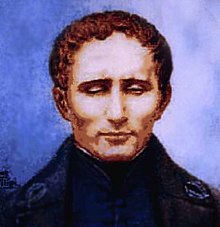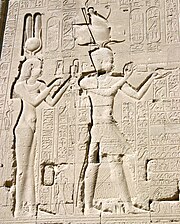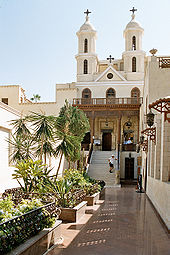Mahatma gandi ke 33 fact
M.K gandi
fact In Hindi
“मजबूरी का नाम महात्मा गांधी ” यह काफ़ी पुरानी कहावत हैं. सबको पता है कि कोई भी बात बिना वजह प्रचलित नही होती। समझ तो आप गए ही होंगे। चलिए अब आगे बढ़ते है, 2 अक्टूबर के दिन 1869 में गांधी जी का जन्म हुआ था। सत्य और अहिंसा के पुजारी महात्मा गांधी का नाम इतिहास के पन्नों में सदा के लिए अमर है. गांधी सिर्फ देश में ही नही विदेशों में भी प्रसिद्ध रहे है। आज 30 जनवरी के दिन 1948 में नत्थू राम गोडसे ने गोली मारकर गांधी की हत्या कर दी। आइये पढ़ते है वो “Mahatma Gandhi in Hindi” जो आप शायद नही जानते।
Facts about Mahatma Gandhi In Hindi
महात्मा गांधी के बारे में रोचक तथ्य
1. महात्मा गांधी (Mahatma Gandhi) जन्म से बहादुर और बोल्ड नेता नहीं थे। बल्कि उन्होंने अपनी आत्मकथा में स्वयं लिखा है कि बचपन में वह इतने शर्मीले थे वह स्कूल से भाग जाते थे ताकि उन्हें किसी से बात न करनी पड़े।
2. संयुक्त राष्ट्र ने गांधी जी के जन्म दिन 2 अक्टूबर को विश्व अहिंसा दिवस (world non-violence day) घोषित किया है।
3. महात्मा गांधी को महात्मा की उपाधि रवीन्द्र नाथ टैगोर ने दी थी और रवीन्द्र नाथ टैगोर को गुरुदेव की उपाधि गांधी जी ने दी थी।
4. सन 1930 में उन्हें अमेरिका की टाइम मैगजीन ने “Man Of the Year” का पुरुस्कार दिया था।
5. महात्मा गांधी अपने जीवन में कभी अमेरिका नहीं गए। और ना ही कभी एयर प्लेन में बैठे।
6. गांधीजी चाहते तो भगत सिँह की फांसी रोक सकते थे पर कई लोगों का यह मानना है कि गांधीजी ने भगत सिंह के केस पर कभी गंभीरता दिखाई ही नहीं।
7. सन 1931 की इंग्लैंड यात्रा के दौरान गांधी जी ने पहली बार रेडियो पर अमेरिका के लिए भाषण दिया। रेडियो पर उनके पहले शब्द थे “क्या मुझे इस माइक्रोफोन के अंदर बोलना पड़ेगा?” “Do I have to speak into this thing?”
8. एक बार गांधी जी को टिकट होने के बावजूद एक अंग्रेज और टिकट कलेक्टर ने “काला” होने के कारण ट्रेन से धक्का मार कर उतार दिया था। यह उनका किसी अंग्रेज के साथ सबसे कड़वा अनुभव था।
9. एक बार गांधी जी का जूता चलती ट्रेन में से नीचे गिर गया। उन्होंने तुरंत अपना दुसरा जूता भी उतार कर ट्रेन फेंक दिया। पूछने पर उन्होंने कहा “एक जूता न तो मेरे काम आएगा न ही उसके जिसे मेरा दूसरा जूता मिलेगा। कम से कम अब वह आदमी तो दोनों जूते पहन सकेगा जिसे मेरे दोनों जूते मिलेंगे”।
10. गांधी जी ने जब अपनी क़ानून की पढ़ाई ख़त्म कर इंग्लैंड में वकालत शुरू की तो वह पूरी तरह असफल साबित हुए। यहां तक कि अपने पहले केस में उनकी टांगें काम्पने लगीं थी और वह पूरी बहस किये बिना ही बैठ गए थे और केस हार गए।
11. दक्षिण अफ्रीका में वह बहुत सफल वकील बने और उनकी आमदनी दक्षिण अफ्रीका में 15000 डॉलर सालाना तक हो गई थी। जरा सोचिये, 99% भारतीयों की सालाना आय आज भी इससे कम है !
12. महात्मा गांधी को “राष्ट्रपिता” (rashtrapita) की उपाधि सुभाष चन्द्र बोस ने दी थी।
13. महात्मा गांधी ने अपनी आत्मकथा गुजराती में लिखी थी।
14. गांधी अपनी पत्नी से अक्सर मारपीट करते थे। उन्होंने दशकों तक उनके साथ शारीरिक संबंध भी नहीं रखे।
15. जब गांधी के पिता अपने जीवन की अंतिम सांसें ले रहे थे, तब भी गांधी सेक्स में लीन थे। उन्होंनें अपने आश्रम में रहने वाली दो ब्रिटिश महिलाओं से शादी की थीं।
16. गांधी को अपनी फोटो खींचा जाना बिल्कुल पसंद नहीं था, लेकिन आज़ादी की लड़ाई दौरान वह अकेले शख्स थे, जिनकी फोटो सबसे ज्यादा ली गई थी।
17. गांधी जी को सम्मान देने के लिए एप्पल के संस्थापक स्टीव जॉब्स गोल चश्मा पहनते थे।
18. गांधी अपने दोस्त हिटलर को पत्र लिखते थे और उनका समर्थन भी करते थे।
19. गांधी जी स्वदेशी के बहुत कट्टर समर्थक थे, किन्तु उनका पहला डाक टिकट स्विट्जरलैंड में छपवाया गया था।
20. गांधी जी अपने नकली दांत अपनी धोती में बाँध कर रखते थे। वह उन्हें केवल खाना खाते समय ही लगाया करते थे।
21. गांधी जी को दो चीज़ों की बहुत चिंता रहती थी। पहली उनकी हैंडराइटिंग और दूसरी मसाज कराना। उन्हें दूसरों से मसाज कराना बहुत अच्छा लगता था।
22. गांधी अपनी 12 वर्षीय भतीजी और एक अन्य महिला के साथ ‘न्यूड’ सोते थे। इस पर गांधी जी का तर्क था कि वे अपनी मर्दानगी को नियंत्रित करने के लिए ऐसा करते थे।
23. गांधी के बेटे ने उन्हें छोड़ दिया था और इस्लाम धर्म अपना लिया था।
24. जिस अंग्रेजी सरकार के खिलाफ गांधीजी ने आंदोलन किया उसी अंग्रेजी सरकार ने महात्मा गांधी की मौत 21 साल बाद उनके सम्मान में स्टांप जारी किया था।
25. 1999 में गांधी जी को Times Magzine द्वारा Albert Einstein के बाद 19वीं सदी का दूसरा सबसे प्रभावशाली व्यक्ति चुना गया।
26. स्वतंत्रता दिवस की रात गांधी जी नेहरू जी का भाषण सुनने के लिए मौजूद नहीं थे, उस दिन गांधी जी उपवास पर थे।
27. भारत की स्वंत्रता प्राप्ति के पश्चात कुछ पत्रकार गाँधी जी के पास आए और उनसे अंग्रेजी में बात करने लगे. मगर गाँधी जी ने सभी को रोका और कहा कि, “मेरा देश अब आजाद हो गया है, अब मैं हमारी हिन्दी भाषा ही बोलूँगा।
28. अपनी मौत से एक दिन पहले महात्मा गांधी Congress Party को खत्म करने पर विचार कर रहे थे।
29. गांधी जी को जीवन में 5 बार नोबल पुरूस्कार के लिए नामांकित किया गया था। किन्तु 1948 में पुरूस्कार मिलने से पहले ही उनकी हत्या हो गई। फलस्वरूप नोबल कमेटी ने पुरुस्कार उस साल किसी को भी नहीं दिया।
30. गांधी जी समय के बेहद पाबंद थे। उनकी कुछ संपत्ति में से एक, एक डॉलर की घड़ी थी। 30 जनवरी, 1948 को जिस दिन गाँधी जी की हत्या कर दी गई थी, वे बस इसलिए परेशान थे की एक नियमित प्रार्थना सभा के लिए वे दस मिनट देरी से आ रहे थे।
31. मूंगफली खाने के बाद गोडसे ने गांधी को एक के बाद एक तीन गोलियां मारी थी। अंतिम समय में गांधीजी के मुंह से निकला, “राम…..रा…..म.”
32. गांधी जी की मृत्यु पर पंडित नेहरु जी ने रेडियो द्वारा राष्ट्र को संबोधित किया और कहा “राष्ट्रपिता अब नहीं रहे“।
33. जिस वाहन में 1948 में महात्मा गांधी को अंतिम संस्कार के लिए ले जाया गया था वही वाहन सन 1997 में मदर टेरेसा की अंतिम यात्रा के लिए इस्तेमाल किया गया था।













